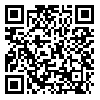دوره 7، شماره 2 - ( 9-1399 )
جلد 7 شماره 2 صفحات 40-34 |
برگشت به فهرست نسخه ها
چکیده: (2016 مشاهده)
Introduction: Avian influenza virus causes severe economic losses to the poultry industry and has a great potential for becoming a pandemic threat for humans. The application of natural adjuvants has opened up new avenues toward reaching a highly efficient and safe vaccine in recent years. In this study, we investigated the adjuvant activity of interferon-induced myxovirus resistance (Mx) protein on chitosan-based H9N2 nanoparticles in a BALB/c mouse model. Methods: The inactivated H9N2 virus antigen was encapsulated in chitosan nanoparticles (NPs) using gelation method. Female BALB/c mice were randomly divided into four groups (n=10). Group A received the H9N2-loaded chitosan NPs mixing with Mx intranasally and was boosted twice with a 1-week interval. Group B received the H9N2-loaded chitosan NPs in the same manner. Mice in groups C and D received the chitosan NPs and PBS, respectively as negative controls. Body weights of the mice were measured at defined times. Blood samples were collected from the animals and their influenza-specific antibody titer was determined using ELISA. Results: The results demonstrated a higher antibody level in treated groups A and B as compared to the control samples. We also showed that the combination of Mx and chitosan could significantly induce an influenza-specific antibody titer, indicating synergistic effects of the applied adjuvant and NPs together. Conclusion: The formulation of H9N2 with Mx as an adjuvant and chitosan as a nanocarrier is a promising procedure for developing an efficient vaccine against avian influenza virus.
نوع مطالعه: Original article |
موضوع مقاله:
Vaccine vectors, adjuvantsand immunomodulators
دریافت: 1399/7/16
دریافت: 1399/7/16
| بازنشر اطلاعات | |
 |
این مقاله تحت شرایط Creative Commons Attribution-NonCommercial 4.0 International License قابل بازنشر است. |

